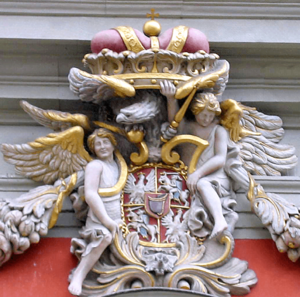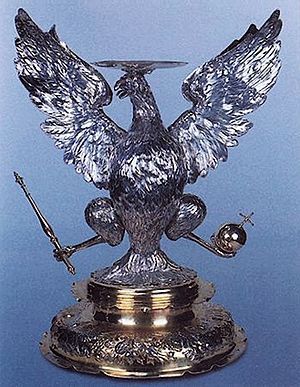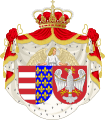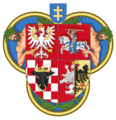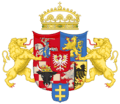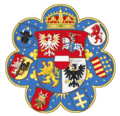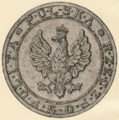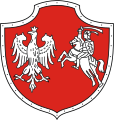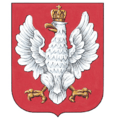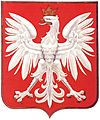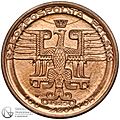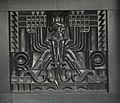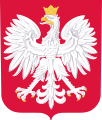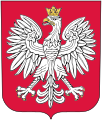Coat of arms of Poland facts for kids
Quick facts for kids Coat of arms of Poland |
|
|---|---|
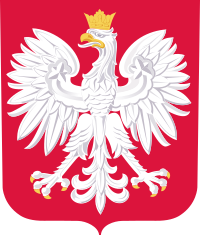 |
|
| Armiger | Republic of Poland |
| Adopted | c. 1000; current design from 1927, last modified on 29 December 1989 |
| Blazon | Gules, an eagle argent, armed, crowned and beaked or, langued argent |
The coat of arms of Poland shows a white, crowned eagle with a golden beak and talons, all on a red background.
In Poland, people often call the coat of arms godło. This is a special word for a national symbol, even though other coats of arms are usually called a herb. The word godło originally meant just the eagle itself, not the whole design.
Contents
What the Law Says
The design of Poland's coat of arms is explained in two important documents. One is the Constitution of the Republic of Poland from 1997. The other is a law from 1980 about Poland's symbols, like its coat of arms, colors, and anthem. These laws make sure everyone knows what the official symbols look like.
How the Eagle Looks
The Constitution says the coat of arms is a crowned white eagle on a red background. The law adds that the crown, beak, and talons (claws) of the eagle are gold. The eagle's wings are spread out, and its head faces right.
In the language of heraldry (the study of coats of arms), this is called "Gules an eagle crowned, beaked and armed Or." This means a red background with a white eagle that has a gold crown, beak, and talons. Unlike some older coats of arms where artists could draw the eagle differently, Poland's law says there is only one official way it should look.
The white eagle itself is drawn in a very special, artistic way. Its wings and legs are stretched out, and its head is turned to the right. This pose is called 'displayed' in heraldry. The eagle's feathers, tongue, and leg scales are white, with shading that makes them look like they are carved. Each wing has a curved band and a five-leaf shape called a 'cinquefoil'. The crown on the eagle's head has a base and three decorative parts that look like fleur-de-lis. The whole crown, including its gems, is gold.
The eagle is placed on a shield that is almost rectangular, with a rounded bottom and a pointed tip. This type of shield is called a Modern French shield. Even though the shield is part of the coat of arms, sometimes the eagle is used by itself without the shield. The exact shades of white and red, which are Poland's national colors, are carefully defined by law.
The Eagle's Story
According to an old legend, the White Eagle symbol began with Poland's first leader, Lech. He saw a white eagle's nest. As he watched, the red setting sun shone on the eagle's wings, making them look golden. The rest of the eagle was pure white. Lech loved this sight and decided to build his settlement there. He put the eagle on his emblem and named the place Gniezdno (now Gniezno), which comes from the Polish word for "nest."
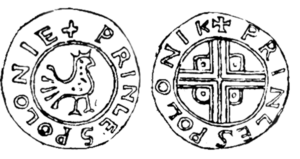
The eagle symbol first appeared on coins made during the time of Bolesław I the Brave (992-1025). It was first the symbol of the Piast dynasty, an early ruling family. By the 12th century, the eagle was seen on shields, flags, coins, and seals of Polish dukes. It became the official Polish coat of arms during the reign of Przemysł II, reminding everyone of the old Piast traditions.
The way the eagle looks has changed a lot over hundreds of years. Its current design, chosen in 1927, was created by Professor Zygmunt Kamiński. His design was based on how the eagle looked during the time of Stefan Batory.
During the Polish–Lithuanian Commonwealth, the coat of arms was divided into four parts. It showed the Polish eagle and the Lithuanian Pogonia (a knight on horseback). Kings would often add their own family symbols in the middle of the shield.
Even when Poland was divided by other countries, the White Eagle remained a strong symbol. It appeared on many flags and emblems during uprisings, like the November Uprising, showing that Poles still wanted their independence.
After World War II, when Poland became a communist country, the royal crown was removed from the eagle's head. However, Poland was one of the few countries in Eastern Europe that didn't add communist symbols like red stars to its flag or coat of arms. After communism ended in 1989, the crown was put back on the eagle's head.
Today, the eagle is seen everywhere in Poland. It's on government buildings, in schools, and in courts. It's also on Polish coins. The eagle was even on the Poland national football team's shirts, and when it was briefly removed, fans and even the president asked for it to be put back!
How the Eagle Changed Over Time
| Period | Dates used | Coat of arms | Banner of arms | Description | |
|---|---|---|---|---|---|
| Early Poland | 966–1025 | 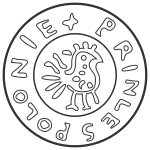 |
 |
An early eagle symbol from coins of Boleslaus I of Poland. | |
| Kingdom of Poland | 1295–1371 | 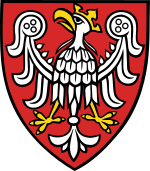 |
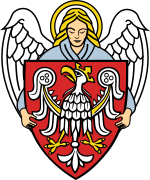 |
 |
The coat of arms of the Piast dynasty. |
| Union of Poland and Hungary | 1370–1382 | 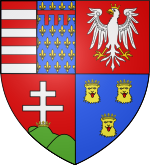 |
 |
Coat of arms used under Louis I of Hungary, combining symbols of Hungary and Poland. | |
| Kingdom of Poland | 1217–1371 | 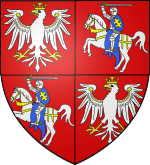 |
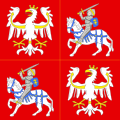 |
The Kingdom of Poland and the Grand Duchy of Lithuania joined together. The shield shows the Polish eagle and the Lithuanian Pogonia. | |
| Polish–Lithuanian Commonwealth | 1573–1575 |  |
During the Commonwealth, the king's own family symbol was added in the middle. This one belonged to Henry III of France. | ||
| 1587–1668 | 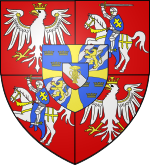 |
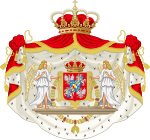 |
 |
The coat of arms for the House of Vasa kings. | |
| 1669–1673 | 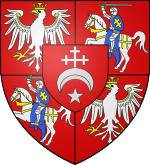 |
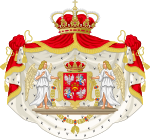 |
 |
The coat of arms for Michał Korybut Wiśniowiecki. | |
| 1674–1696 | 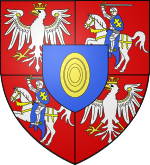 |
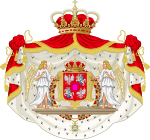 |
The coat of arms for John III Sobieski. | ||
| 1697–1704 1709–1763 |  |
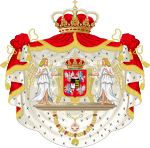 |
 |
The coat of arms for the House of Wettin kings. | |
| 1704–1709 | 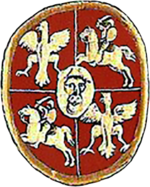 |
 |
The coat of arms for Stanisław Leszczyński. | ||
| 1764–1795 |  |
 |
The coat of arms for Stanisław August Poniatowski. | ||
| Duchy of Warsaw | 1807–1815 |  |
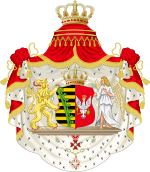 |
Coat of arms combining the House of Wettin and the Polish eagle. | |
| Kingdom of Poland | 1815–1832 | 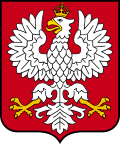 |
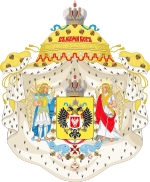 |
 |
The Coat of arms of Congress Poland. |
| Grand Duchy of Posen | 1815–1848 | 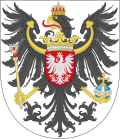 |
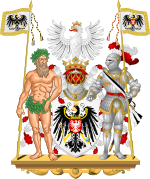 |
The Prussian eagle with the Polish eagle inside. | |
| Polish National Government | 1830–1831 | 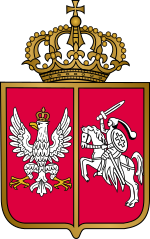 |
 |
Polish eagle and Pogonia used during the November Uprising. | |
| Polish independence movement | 1846 | 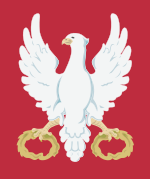 |
 |
||
| Polish National Government | 1863–1865 |  |
This coat of arms includes Archangel Michael representing Ruthenia. | ||
| Vistula Land | 1867–1915 | 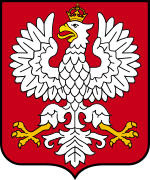 |
|||
| Government General of Warsaw | 1915–1918 | 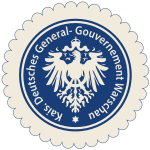 |
Seal of the Government-General of Warsaw, includes a Prussian eagle. | ||
| Kingdom of Poland | 1916–1918 | 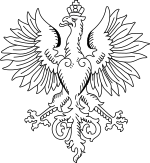 |
Eagle with the seal of the Regency Council. | ||
| Second Polish Republic | 1919–1927 | 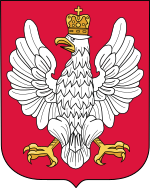 |
 |
The first modern coat of arms of independent Poland. | |
| Second Polish Republic and Polish Government in exile | 1927–1939 1939–1956 | 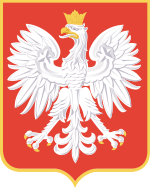 |
 |
Zygmunt Kamiński's design, which is similar to the current one. | |
| Polish Government in exile | 1956–1990 | 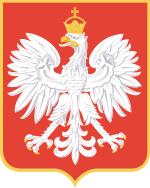 |
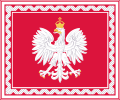 |
The crown was redesigned as a closed crown. | |
| Polish People's Republic | 1955–1980 |  |
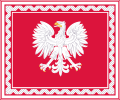 |
The crown was removed during the communist era. | |
| 1980–1990 | 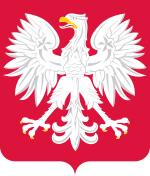 |
 |
The eagle with updated colors. | ||
Kings of Poland
-
Władysław II Jagiełło (Jogaila)
Restored Poland
-
The white eagle in the coat of arms of Poland (1919-1927).
-
Polish coat of arms (unofficial) in Art Deco style, on a building in Warsaw (1931).
-
Coat of arms of Poland during the Warsaw Uprising, 1944.
Communist Poland
-
The coat of arms of the Polish People's Republic against the Palace of Culture and Science, showing Soviet influence.
Third Polish Republic
Military Eagle
See also
 In Spanish: Escudo de Polonia para niños
In Spanish: Escudo de Polonia para niños
- Banner of Poland
- Coat of arms of Lithuania
- Coat of arms of Congress Poland
- Coat of arms of the Polish–Lithuanian Commonwealth
- List of Polish nobility coats of arms images
- Flag of Poland
- Order of the White Eagle – the highest award in Poland.
- Polish coins and banknotes
- Polish military eagle
- Polish heraldry


